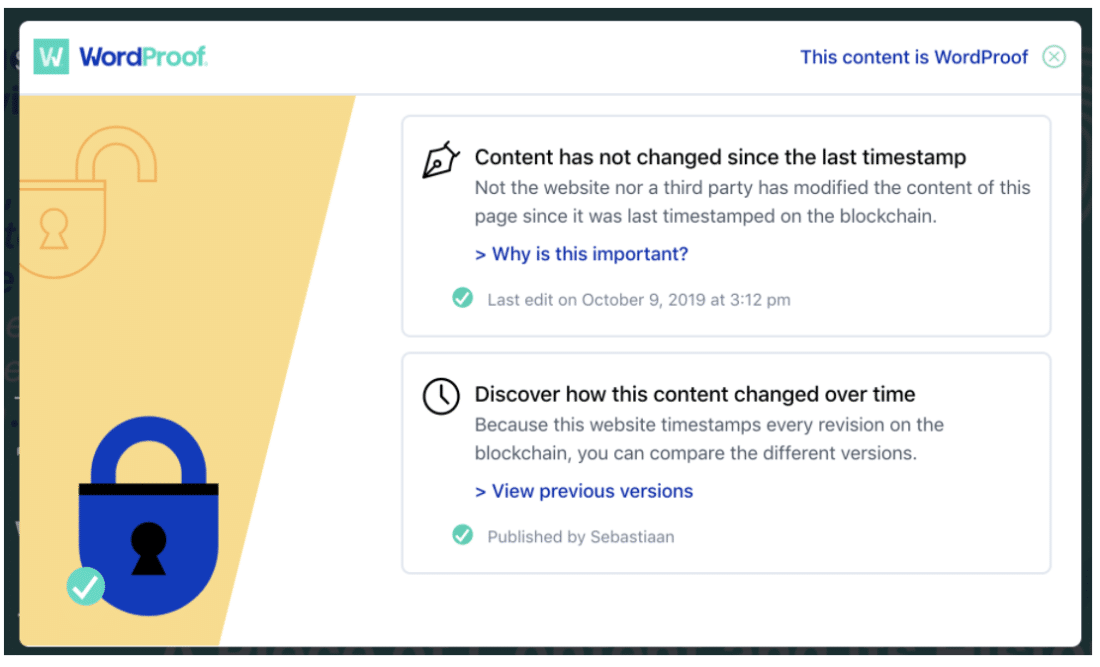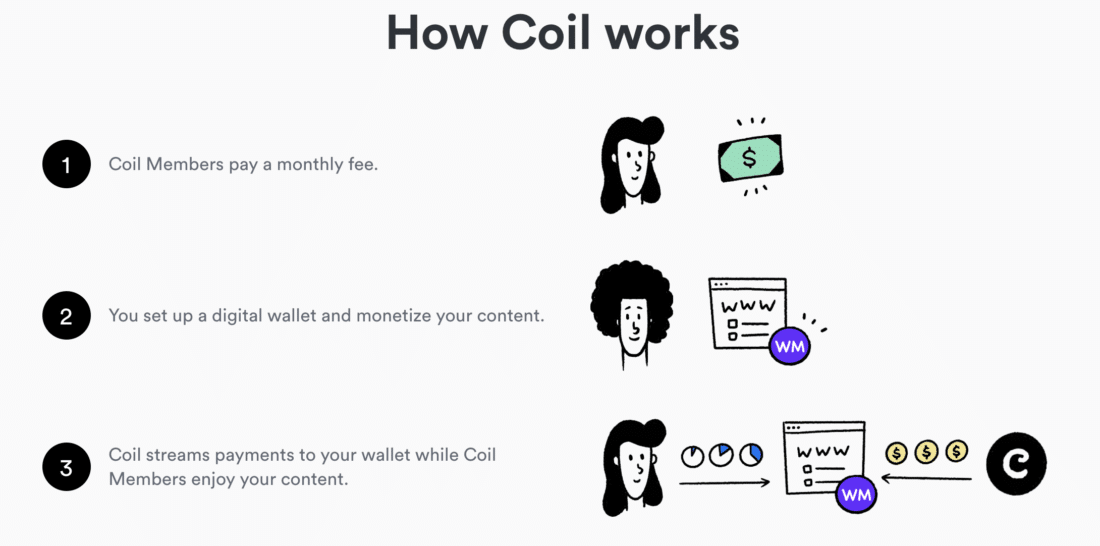This article is the second in a series on WordPress and blockchain. To get up to speed, you might want to read the first one, WordPress + Blockchain = Disruption and Opportunity. To start off, I wanted to look at a few projects that either use crypto/blockchain technology directly or demonstrate blockchain-inspired projects. With these big tech trends, it’s easy to zoom out and let imagination run wild. My intention with this post is to stay very grounded in the here and now. These are (nearly) all projects that you can use today.
6 Blockchain-Inspired Projects
I wanted to highlight some projects that present opportunities (rather than promises) for the WordPress community today. Not all of these use blockchain, and where they do they sometimes use it secondarily as a supporting technology. But they all help illustrate the way that the blockchain space has evolved and matured. And many of them help build towards a more trusted web.
1) WordProof

WordProof is a service that makes it easy for website owners to timestamp their content, proving that this exact piece of content was published on this site at this time. WordProof does indeed use blockchain (EOS) to notarize the timestamps, and it is that immutable integrity of blockchains that inspired the project. WordProof’s aim is to help build a trusted web.
Timestamping enables search engines to verify authenticity and use this information as a ranking factor and trust signal for searchers. Another use case is for e-commerce stores to timestamp their Terms & Conditions pages to build trust and transparency with customers.
Action you can take today: Install WordProof and start timestamping your content to demonstrate your commitment to transparency and to help protect your rights.
2) Gitcoin
Funding for open source projects is difficult. I could write a whole post on this alone. But suffice to say there are plenty of examples of where open source contributors and maintainers don’t enjoy the status quo (here, here and here, as just a few examples). Because of the lack of clear routes to get paid for contributing, it excludes many in the community.
This only gets amplified in the decentralized world of crypto where there isn’t even necessarily a central organization to provide salaries; in other words, where the projects are entirely dependent on sustainable open source models. Gitcoin helps by allowing people to post bounties for work, and to earn it by completing that work.
Action you can take today: Post a bounty for work you need doing, or work on a bounty to earn.
3) Coil, Interledger and Web Monetization

Micropayments have been talked about for decades. Bear with me; this one is a little involved. Not too long ago I wrote up a pretty comprehensive guide if you want a potted history. Interledger is an open protocol that allows currency-agnostic (whether USD, XRP or BTC) streaming of micro- (and non-) payments. It’s implemented through a W3 draft standard called Web Monetization that makes it super simple for use on any website. Coil is a project founded by the ex-CTO of Ripple (a major cryptocurrency) that makes it easy for people to fund a digital wallet that then streams currency as they visit web monetized websites.
This suite of projects basically allows for anonymous micropayments which are cost-effective and built on open standards and protocols, providing content creators and publishers with a whole new way to monetize their content alongside ads, paywalls, e-commerce, lead generation and other revenue streams.
Action you can take today: Use the Coil WordPress plugin to web monetize your site and sign up to help others who are trying to monetize their own sites.
4) AdNode
Adnode is very clever ad tech middleware that gives the ability for participants in adtech—advertisers, publishers and agencies—to achieve rapid consensus on the results of digital advertising campaigns. This shines a light on a core use for blockchain’s shared and open ledger, the ability to achieve consensus between parties that have different or opposing agendas. WordPress is a very popular platform for publishers and content creators that rely on ad revenues; any technologies that can help improve this ecosystem are no doubt welcome.
Action you can take today: If you’re an advertiser or agency, get in touch with AdNode for a demo.
5) Brave Browser
Brave is a privacy-focused browser based on Chrome. Its proposition is simple but elegant. By blocking ads and trackers by default, it reduces the amount of data a user downloads. This, in turn, increases speed, reduces power consumption and reduces data costs. The only problem is that much of the web currently relies on adtech and data harvesting for revenue.
To tackle this, Brave offers a different revenue stream—direct reader revenue via its built-in token (Basic Attention Token), which you can then either spend directly or trade for other currencies, crypto or otherwise. It’s getting good growth (now up to 25M monthly active users) and configuring your WordPress site to start receiving BAT revenues.
6) (Facebook) Diem
This project was launched by Facebook as “Libra,” with very grand ambitions and some very impressive founding members. It’s fair to say that this was not received well by the U.S. government. A number of founders have since dropped out “until the regulatory landscape is clearer” and the project ambitions have been walked backwards towards being a USD-pegged stablecoin. However, Facebook still has roughly half the world’s population as monthly active users; even the idea that their apps may have digital wallets built is profound.
It may prove too much to hope that Diem uses open protocols and standards that any site or app can interact with, but if it does, this could change the whole paradigm of the open web. I can go pretty deep on this one (and I doubt I’m right on every count). I’m going to write more about digital wallets in the next article in this series. It is notable to me that Shopify is a Diem member.
Conclusion
I hope that in this article I’ve managed to bring this buzzy technology down to earth and help you understand the practical, specific and tenable ways in which blockchain technology can either be used right now, or has inspired other projects that you can use today. Will these technologies solve all of the problems with the current web? Almost certainly not. But there’s no doubt that they can be disruptive and create opportunities for the WordPress community.



0 Comments